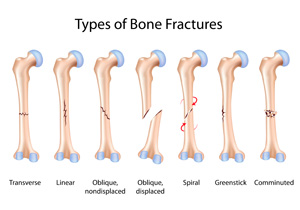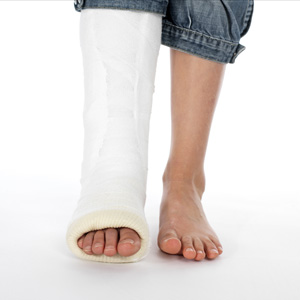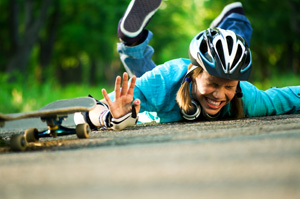Common fractures in kids and teens
If you are kid or a teen, chances are you will break a bone somewhere
along the way to adulthood. For example, according to the Mayo Clinic,
50% of children will break a bone before adulthood. The most common
fractures are (ranked from most frequent to least frequent):
Kids have a greater risk for certain types of injury and fractures than adults. Many fractures may occur when injury is introduced to developing growth plates and bones. Varsity Orthopedics specializes in fractures from ages of 20 and under. Examples of child-specific fractures include epiphyseal, or growth-plate fractures, greenstick fractures and bending fractures.
Epiphyseal (growth-plate) fractures
Epiphyseal fractures are fractures that occur around a growth plate. They are classified into 5 different types. According to the National Institute of Arthritis and Musculoskeletal and Skin Diseases, the growth plate is the weakest part of the skeleton in kids, located at the end of bones around joints, such as wrists, hips, fingers, leg bone, etc. A blow or overuse during sports can cause injury to this area. More about growth-plate injury
Greenstick fracture
Kids are more likely to sustain a greenstick fracture than adults. When
people grow older, their bones become more porous and brittle, but children's
bones are still very hard around the outside and soft (or green) on the
inside. When enough force is applied to a child's bone, it is likely
that the bone will not crack completely through, but break on one side
and bend on the other.Bending
fracture
These fractures, as the name suggests, happen when the bone bends, but does not break. These types of fractures only happen in children because they have a soft, inner tissue of bone.
First aid
If you suspect a child has broken a bone, the Mayo Clinic provides the following advice:
- Do not move the injured area.
- Take the child to a hospital or clinic for X-rays.
- If he or she appears faint, or in shock, loosen tight clothing, use a blanket for warmth and if possible, elevate the feet.
- If there will be a long delay before medical treatment, use a splint. A splint can be made of wood, plastic, metal or rigid materials. Wrap the area with gauze toward the torso.
Waterproof Casting
Breaking a bone is traumatic at any age, but a cast can sometimes become an even larger worry for a child. The most common complaints of traditional casts are extreme itching, infections, blisters and allergic reactions. However, a breakthrough in casting has helped kids to heal more comfortably than ever before.
Waterproof
casting uses a special water-repellent liner that breathes and permits
evaporation, eliminating a lot of nasty peripheral conditions secondary
to traditional casts. The outside is fiberglass and also water-resistant.
Kids can get the cast wet, which means swimming, bathing, and sweating
are no longer taboo.
Fractures and severe sprains treated with waterproof casts have the same healing time as other casts. In fact, waterproof casts are more successful than traditional casts that are changed more frequently because they can get wet or cause kids to develop irritation or infections. One study in The Physician and Sports medicine noted that out of 337 patients, none developed allergic reactions to the waterproof cast liner.
Splint and Cast Care
- Elevate the cast above the heart for the first 48 hours after injury.
- Apply an ice pack to the affected area over the wrap and splint for 20 minutes of each hour for the first 24-48 hours after injury. DO NOT ever use an ice pack directly on the skin.
- Notify your physician if any paleness, numbness, or extreme pain that does not subside with pain medication develops in the affected area. If this does occur, make the patient stay at rest, slightly elevate the extremity, loosen the wrap slightly, and call your physician.
- If you have chosen a waterproof cast, allow only clean, clear water beneath the cast. DO NOT submerse the cast in dirty water, lake or ocean water and do not allow dirt or other particles beneath the cast.
- If
your child's cast is not waterproof, you can keep it clean and dry
by placing it in a plastic bag and taping the top of the bag to prevent
water from entering. Use tape without a rubber base.

- If the cast gets wet, dry it with a blow dryer set on low. Notify the physician if the cast still feels wet underneath.
- Notify the physician if itching develops. Never attempt to scratch underneath the cast with a foreign object.
- If any areas of the cast irritate your child, make an appointment to have your physician trim the cast. In the meantime, place a Band-Aid over the affected area to protect skin or on the cast to cover the rough area.
- DO NOT at any time remove the splint or cast.
- If the child has a hip spica cast (body cast), keep the diaper tucked underneath the cast tightly, not outside the cast, to prevent soiling. If the cast does become soiled, clean the edges with soap and water along with the skin in that area and dry with a blow dryer set on cool. The physician cannot replace a cast due to soiling.
